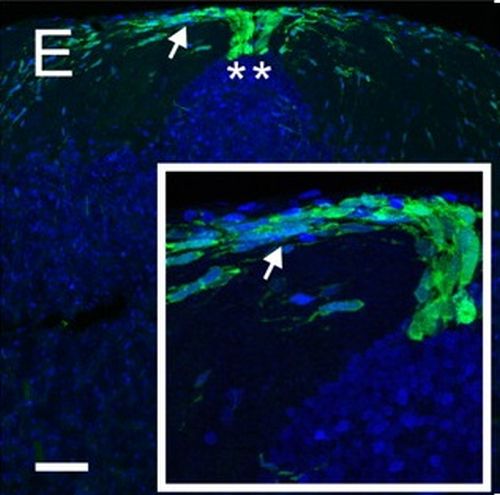Stem cells in the adult zebrafish cerebellum: initiation and maintenance of a novel stem cell niche.
In the adult CNS, neurogenesis takes place in special niches. It is not understood how these niches are formed during development and how they are maintained. In contrast to mammals, stem cell niches are abundant in zebrafish and also found in other parts of the brain than telencephalon. To understand common characteristics of neural stem cell niches in vertebrates, we studied the origin and architecture of a previously unknown stem cell niche using transgenic lines, in vivo imaging, and marker analysis. We show that bipotent stem cells are maintained in a distinct niche in the adult zebrafish cerebellum. Remarkably, the stem cells are not typical glia but instead retain neuroepithelial characteristics. The cerebellar stem cell niche is generated by the coordinated displacement of ventricle and rhombic lip progenitors in a two-step process involving morphogenetic movements and tissue growth. Importantly, the niche and its stem cells still remain in ventricular contact through a previously unknown derivative of the ventricle. Factors propagated in the ventricle are thought to be important regulators of stem cell activity. To test the requirements of one family of important factors, Fibroblast growth factors, we used zebrafish with an inducible dominant-negative Fgf receptor. Inhibition of Fgf signaling leads to significant reduction of stem cell activity. In contrast to the predominant view, adult neural stem cells in nonmammalian vertebrates show more neuroepithelial than glial characteristics. Nevertheless, retained epithelial properties such as distinct polarization and ventricular contact are critical common determinants to maintain neural stem cell activity in vertebrates.
Back to list
